Who is here? 1 guest(s)
|
Head of Anthomyiid.. - Lasiomma seminitidum
|
|
| jorgemotalmeida |
Posted on 17-02-2008 16:10
|
|
Member Location: Posts: 9295 Joined: 05.06.06 |
I think. Taken today in Silgueiros - Viseu on stone. 
Edited by jorgemotalmeida on 07-01-2010 01:35 |
|
|
|
| Nikita Vikhrev |
Posted on 17-02-2008 19:18
|
|
Member Location: Posts: 9193 Joined: 24.05.05 |
Jorge, there are crossed interfrontal. Some Muscidae has it too, but usualy it means Anthomyiidae, as in this case.
Nikita Vikhrev - Zool Museum of Moscow University |
|
|
|
| jorgemotalmeida |
Posted on 17-02-2008 19:29
|
|
Member Location: Posts: 9295 Joined: 05.06.06 |
yes , Nikita. But I saw the wing venation and anal vein 1 doesn't reach margin. There are very, very few anthomyiids with anal vein not touching the wing margin. |
|
|
|
| jorgemotalmeida |
Posted on 17-02-2008 19:30
|
|
Member Location: Posts: 9295 Joined: 05.06.06 |
you are in Turkey again....   |
|
|
|
| Nikita Vikhrev |
Posted on 18-02-2008 09:55
|
|
Member Location: Posts: 9193 Joined: 24.05.05 |
1. Still I think it is Anthomyiidae 2. Once at 2-3 years it snows in Antalia. Today I'm 'lucky' to observe this rare weather. Fly beg do not disturb them so far...   
Nikita Vikhrev - Zool Museum of Moscow University |
|
|
|
| jorgemotalmeida |
Posted on 23-02-2008 18:12
|
|
Member Location: Posts: 9295 Joined: 05.06.06 |
Nikita had reason. With these photos I will show it must be anthomyiid. |
|
|
|
| jorgemotalmeida |
Posted on 23-02-2008 18:15
|
|
Member Location: Posts: 9295 Joined: 05.06.06 |
another one... |
|
|
|
| jorgemotalmeida |
Posted on 23-02-2008 18:19
|
|
Member Location: Posts: 9295 Joined: 05.06.06 |
blurry photo.  |
|
|
|
| Michael Ackland |
Posted on 24-02-2008 17:25
|
|
Member Location: Posts: 680 Joined: 23.02.08 |
It is definitely a female anthomyiid. I will make a quess (risky with photos) and say that it might be a Lasiomma species, because I can see in the excellent photos two anterior katepisternal setae, not common in Anthomyiidae. The rather distinct vittae on the scutum look like L. strigilatum Zett., which appears early in the year. In one photo I can see at the bottom of the right eye what could be fine pale hairs That's where the name Lasiomma comes from, though not all species have hairy eyes. |
|
|
|
| jorgemotalmeida |
Posted on 24-02-2008 17:39
|
|
Member Location: Posts: 9295 Joined: 05.06.06 |
yes. It is right this fly has pale hairs on eyes. I can see two posterior katepisternal strong bristles as well. |
|
|
|
| jorgemotalmeida |
Posted on 24-02-2008 17:41
|
|
Member Location: Posts: 9295 Joined: 05.06.06 |
great to know even with some guess the name of the anthomyiid besides Egle and Anthomyia species..  |
|
|
|
| Kahis |
Posted on 24-02-2008 17:53
|
|
Member Location: Posts: 1999 Joined: 02.09.04 |
Michael Ackland wrote: It is definitely a female anthomyiid. I will make a quess (risky with photos) and say that it might be a Lasiomma species, because I can see in the excellent photos two anterior katepisternal setae, not common in Anthomyiidae. The rather distinct vittae on the scutum look like L. strigilatum Zett., which appears early in the year. In one photo I can see at the bottom of the right eye what could be fine pale hairs That's where the name Lasiomma comes from, though not all species have hairy eyes. See? This is what I ment when I said anthomyiids aren't that difficult. If we can not identify them, the fault lies with us, not the flies 
Kahis |
|
|
|
| jorgemotalmeida |
Posted on 24-02-2008 17:54
|
|
Member Location: Posts: 9295 Joined: 05.06.06 |
 So true, Kahis!! So true! So true, Kahis!! So true!  Now, anthomyiids will turn so, so easy.  Only cecidomyiids and chironomids and some sarcophagids will remain in the hell families.  |
|
|
|
| Michael Ackland |
Posted on 24-02-2008 21:04
|
|
Member Location: Posts: 680 Joined: 23.02.08 |
Many apologies, I meant to say: Lasiomma seminitidum Zett. Actually L. seminitidum and strigilatum females are really very similar in general appearence, and the only reliable structural difference is that in seminitidum the ventral surface of the costa (vein C) below the anterior spicules is setulose, and strigilatum it is bare, except at extreme base. Your photo could be either based on the characters visible. The males are easier to identify (as usual) and have different genitalia |
|
|
|
| jorgemotalmeida |
Posted on 24-02-2008 21:05
|
|
Member Location: Posts: 9295 Joined: 05.06.06 |
OK. rectified.  |
|
|
|
| Jump to Forum: |


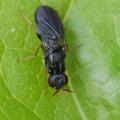



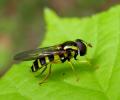
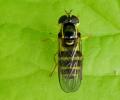

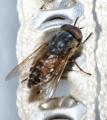
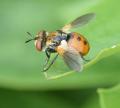



 but don't see the image in the post.
but don't see the image in the post.